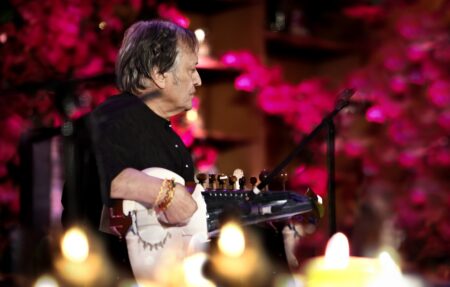Music and mass movements share a curious bond that has been perfected over the years. From India to Egypt, slogans and songs power sociopolitical movements and campaigns. Here’s a quick take.
Songs are an integral part of all societies. Name a mood, an idea, an event or a movement — you have a song for it. In mass movements, arguably, music sees some of its most powerful expressions. One can cite several examples — from Safaroshi Ki Tamanna to Balikudeerangale in India, to start with. What really explains the relationship between movements and music?
Granted, both music and mass movements share some common traits: harmony, conflict and, yes, compromise. But there’s something more, obviously. Recent history witnessed several political movements — from Honk Kong, Egypt, Lebanon, Catalonia and Chile to the US, Haiti, Iraq and India. These geographies recently witnessed millions of protestors coming out in the streets singing and dancing, refusing to accept the status quo, wanting change in their society.
And sing and dance they all did.
Singing in a movement
India’s social history is full of memorable slogans and songs. The nationalist movement was built on a chain of songs, from Vande Mataram to Ekla Chalo Re to Sare Jahanse Acha and Jana Gana Mana. Post Independence, slogans such as Garibi Hatao and Jai Jawan-Jai Kisan gained popularity.
The growth of India’s communist movement relied heavily on music and slogans for its campaigns. Examples include the extremely popular songs of the Kerala People’s Arts Club aka KPAC. Songs formed an integral part of mass movements in places such as Andhra, Telangana, the Maratha region, Jammu & Kashmir and several parts of the North East where radical movements have relied on music to propagate their ideologies and in many instances seperatist sentiments. India’s environmental movement has used music to further its cause. Remember the unique and appealing Gaon Chodab Nahi or the touching Maa Reva?
Citizens and farmers
Cut to the present, slogans, campaign verses and protest songs have been rocking India for sometime now, especially in cities. Recently, the country’s cities have witnessed massive protests (the anti-CAA campaigns, farmer protests) and elections (state elections in Kerala, West Bengal, Tamil Nadu, Assam and Puducherry).
Nationwide, the one protest song that people instantly identify is Azadi (Freedom), popularised by Leftist student leader Kanhaiya Kumar.” It became an anthem in itself and later found its way to the soundtrack of a Bollywood film. When the protests against CAA-NRC were at their height people started singing Faiz Ahmed Faiz’s Hum Dekhenge. It became a defining moment of the protest, unifying people and bringing about solidarity.
The anti-CAA-NRC song penned by Varun Grover, Hum Kagaz Nahi Dikhayenge gained a lot of attention as it took the popular sentiment and voiced it without fear. A young poet, Aamir Aziz, wrote the poem Sab Yaad Rakha Jayega as a response and in the wake of the attack on Jamia Millia University in New Delhi. These young singers and songwriters talk of incidents that have captured the imagination of the youth, the hopes and aspirations that people have from and for our country. They all talk of positivity, hope and inclusion, of a better future.
During the farmers’ protest in New Delhi, the farmers from Punjab were singing folk songs, it became a medium through which they shared their grievances. Indianized versions of the Italian anti-fascist song Bella Ciao have also become famous, and people are not shying away from expressing their anger.
Poll songs
All major political parties had campaign songs through which they tried to connect with the people and spread the idea of how grand their respective ideologies are. In Bengal, Khela Hobe” turned out to be one of the most listened to poll songs, as intense as the election in Bengal was. The TMC song, which roughly translates into ‘Game On’ in Bangla was played at all the rallies of the party.
The BJP’s campaign song was Pishi Jao, a spinoff of Bella Ciao, whereas the Left came out with a spoof of Tumpa Shona. These songs referred to party defections, how dynasty politics is being played out and how political parties if voted to power will protect the culture of people. In Kerala, the ruling party released Urappanu Keralam, highlighting the stand and ideology of the LDF coalition.
And the list goes on. Songs keep inspiring the crowds in India and political parties and social groups are introducing more and more numbers, igniting myriad spirits among the public, especially the youngsters. Our list is not at all exhaustive. What are your favourite political campaign songs? Send us your list. Let’s all listen in and get inspired.




